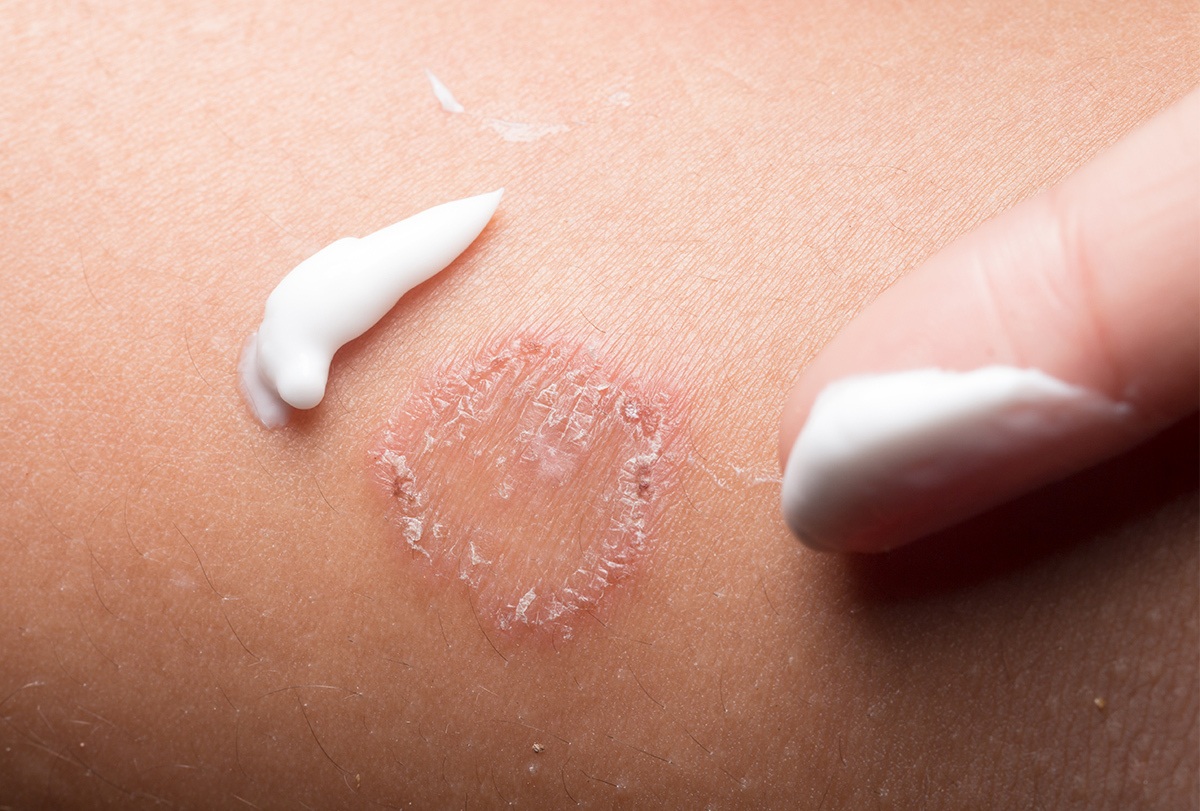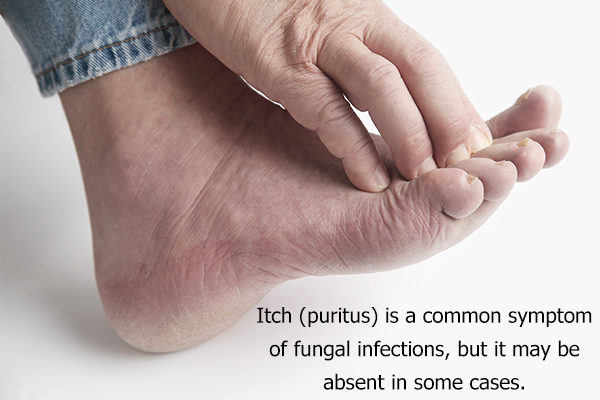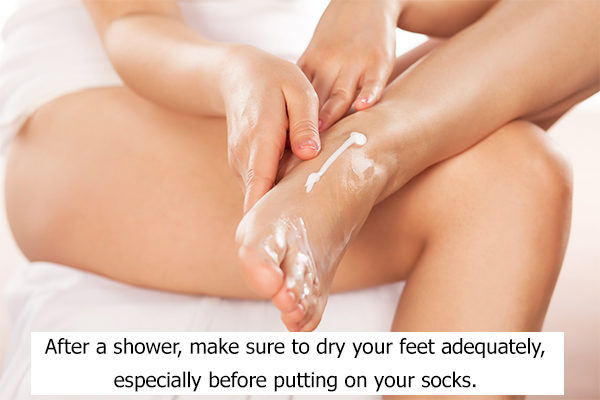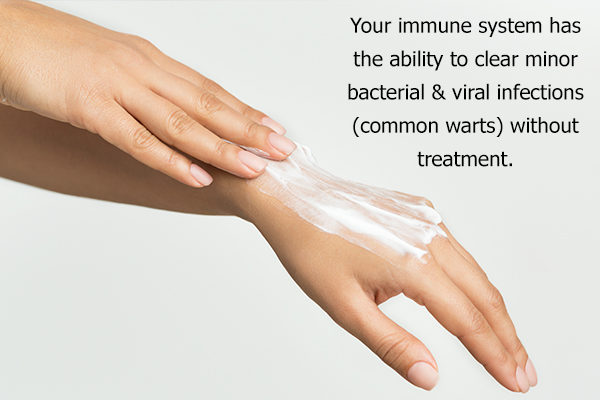In this article:
The medical term for ringworm on the body is tinea corporis. It is a fungal infection that causes a red, itchy rash outlined by a scaly border in the shape of a ring, creating a “ring” of scales. The shape of this rash is called annular or polycyclic as the rash can look like one circular plaque of rash or interconnecting circles of rash.

The ringworm rash can occur on any area of the body. This infection is mostly superficial, which means that the fungus thrives only on the first layer of the skin (stratum corneum). (1)
Causes of Ringworm
“Ringworm” is a misnomer as it is not caused by worms but by a specific species of fungus called dermatophytes, which live on the skin, hair, and nails.
Dermatophytes can also cause:
- Tinea pedis (athlete’s foot)
- Tinea cruris (jock itch)
- Tinea manuum (involves the hands)
- Tinea capitis (involves the skin of the scalp, eyelashes, and eyebrows)
- Tinea faciei (involves the face)
- Tinea barbae (involves the hair)
- Onychomycosis (involves the fingernails or toenails)
Symptoms of Ringworm

Itch (pruritus) is very common with fungal infections, but it is not always present. For instance, some people with neuropathy and/or diabetes may feel the classic itch associated with the rash of tinea pedis (athlete’s foot).
Pain can also be associated with the fungal infection, especially if there is:
- Associated maceration between the toes
- A secondary bacterial infection, wherein the bacteria infect open sores caused by an initial fungal infection
Both of these conditions can lead to a serious skin infection called cellulitis.
Mode of Transmission for Ringworm Fungus
Ringworm is highly contagious. The dermatophytes that cause ringworm can be transmitted by infected animals (zoophilic) to humans or by contact with an infected human (anthropophilic). The infection can also transfer from one part of the body to another, known as autoinoculation.
For instance, people with athlete’s foot (tinea pedis) can spread the fungus from their feet to their groin (jock itch) through their contaminated hands. The fungus can also be picked up from an infected surface/soil (geophilic).
Given that the fungus thrives in warm, humid, congested conditions, community pools, gyms, and changing rooms are some of the most common contamination sites.
Medical Treatment for Ringworm
Tinea corporis (ringworm of the body) can be treated with antifungals. Antifungals are classified into two categories:
- Fungistatic
- Fungicidal
Fungistatic medications halt the growth of the fungus but do not directly kill it, whereas fungicidal treatments destroy the dermatophytes directly. Treatment options come in topical cream formulations or oral pills. (2)
Tips to Prevent Fungal Infections Like Ringworm

My main tips are as follows:
1. Don’t walk barefoot on public floors
Be mindful of your surroundings and avoid walking barefoot in public areas including gyms, locker rooms, public showers, and hotel rooms. Pack your own flip-flops/slippers when you travel.
2. Change your footwear and socks daily
Avoid reusing socks and cycle through various pairs of shoes. Wear a fresh pair of socks every day. Also, alternate your footwear/shoes daily and especially avoid wet shoes.
Try to use flip-flops/open-toed shoes in warmer weather to prevent increased moisture from collecting in your footwear and the growth of dermatophytes.
3. Keep your feet moisture-free
After a shower, make sure to dry your feet adequately, especially before putting on your socks.
4. During and after treatment of fungus
If you are recovering from an athlete’s foot infection, use an over-the-counter antifungal spray such as a tolnaftate spray for all of your footwear to prevent reinfection.
Also, wear socks before putting on your pants to avoid moving the fungus from your feet to your groin (jock itch), especially if you suffer from chronic athlete’s foot or get recurrent athlete’s foot.
Healing Period for Ringworm Infection
Early treatment is the best way to ensure a quick recovery from ringworm. Otherwise, it can persist for a long time. It typically takes 2–4 weeks to treat a superficial ringworm rash with topical creams, which may or may not be accompanied by oral antifungal treatment.
The aim is to contain the dermatophytes while they are still on the surface of the skin to keep them from infiltrating into the hair follicles.
An infection that spreads to the dermis or the second layer of the skin through the hair follicles is called Majocchi’s granuloma. This condition is much harder to treat and can take more than a month to resolve with high-dose oral antifungal medication.
Can Ringworm Go Away Without Any Treatment?

I do not see these cases since everyone who comes to the dermatologist for this issue has a persistent rash for weeks to months.
Technically, your immune system can clear minor bacterial infections and viral infections (common warts) without treatment. The same can be said for fungal infections.
However, people with compromised immune systems can have more frequent fungal infections or very resistant cases that do not respond to topical medications. These immunocompromised groups include those with diabetes mellitus, HIV/AIDS, and advanced age. (3)
Avoid Home Remedies for Treating Ringworm
Can You Use Rubbing Alcohol, Hydrogen peroxide, Hand Sanitizer, Tea Tree Oil, etc.?
Rubbing alcohol, tea tree oil, apple cider vinegar, and hydrogen peroxide have antimicrobial and antifungal properties that justifies their use in various home remedies to fight skin infections. These mild disinfectants can kill fungal hyphae, but I typically do not recommend their use on a rash.
Rubbing alcohol, apple cider vinegar (undiluted), and hydrogen peroxide can slow wound healing if there are wounds/open sores associated with the fungal infection. They can cause discomfort, chemical burn, and dry skin, which can lead to a flare-up or worsening of eczema and dry skin.
Similarly, hand sanitizer is not going to treat your ringworm infection.
For ringworm/tinea, see your dermatologist if the over-the-counter antifungal creams are not effective.
For fungus infecting the toenail (onychomycosis), I recommend over-the-counter options as the prescription options are not very effective and can be very pricey.
For onychomycosis, I typically recommend soaking the nails in white vinegar diluted in water, followed by an application of hand sanitizer with greater than 60% alcohol content or tea tree oil.
Role of Healthy Lifestyle and Diet in Ringworm Prevention
There are no dietary factors involved with fungal infections. However, if one has diabetes mellitus (high blood glucose) or a compromised immune system, tinea infections can become a recurrent problem.
Thus, exercise (increases insulin sensitivity and allows insulin to work more efficiently) and a healthy diet are recommended to prevent the development of type 2 diabetes. In general, unhealthy eating, weight gain, smoking, drinking alcohol, and emotional stress can worsen any skin condition.
Risk of Scarring in Ringworm Infection
Tinea can leave a darkened/discolored flat patch of post-inflammatory hyperpigmentation, but this fades with time.
Ringworm does not typically cause a scar unless it involves a severe blistering fungal infection called bullous tinea. This type of infection typically involves the feet and lower shins.
Prevalence of Ringworm During Summers
Fungal species thrive in moist and warm environments. During summer, besides the obvious heat, there is increased perspiration of the occluded surfaces of the body, such as the groin and feet. (4)
Men will be affected in the folds of the groin, especially in the area where the scrotum approximates with the adjacent inner thigh.
Overweight or obese individuals tend to have more fungal infections as they have prominent skin folds all over their bodies, which collect sweat and heat, thus providing an ideal environment for dermatophytes or yeast to grow.
Major Differences Between Psoriasis and Ringworm
Here are some of the major differences between psoriasis and ringworm:
- Psoriasis is an inflammatory condition that involves the skin, joints, and even the cardiovascular system, whereas ringworm is a fungal infection.
- Psoriasis can cause a red rash with white scales, which are much thicker than the fine scales seen in ringworm or tinea. (5)
- Unlike ringworm, psoriasis is not contagious and does not involve any microbes (bacteria, fungus, virus, or parasite), although it can occur after a streptococcal pharyngitis (strep throat) infection.
- Psoriasis will improve with topical corticosteroids. On the other hand, tinea will have a change in appearance with topical steroids (tinea incognito) or worsen and become a deeper infection in the skin (Majocchi’s granuloma).
When to See a Doctor
If you are treating a rash with over-the-counter antifungal medications and your rash is persistent, schedule an appointment with your skin specialist.
At the appointment, bring what medications you have tried and be ready to answer questions on your medical history (history of immunosuppression, diabetes). Your dermatologist may scrape your rash and look at the cells under the microscope to visualize fungal elements.
If your rash worsened with a topical steroid or cortisone, you might have a fungal or yeast infection that needs to be evaluated by a skin specialist at the earliest as this may need oral medication.
Final Word
Ringworm is a fairly common fungal skin infection that does not pose a serious threat to your health. However, it can give rise to a lot of skin irritation and can be highly contagious, necessitating proper treatment and care.
People with strong immunity usually overcome this condition rather quickly without much treatment, but those with compromised immunity are not only at a greater risk of contracting the infection but are also less responsive to traditional treatment. These high-risk groups must exercise extra care.
As with any other ailment, “prevention is better than cure” applies to ringworm as well. You can steer clear of this infection by following basic personal hygiene along with the above-listed precautionary measures. If you do contract the fungal infection, consult a doctor about the appropriate medication.
- Was this article helpful?
- YES, THANKS!NOT REALLY


